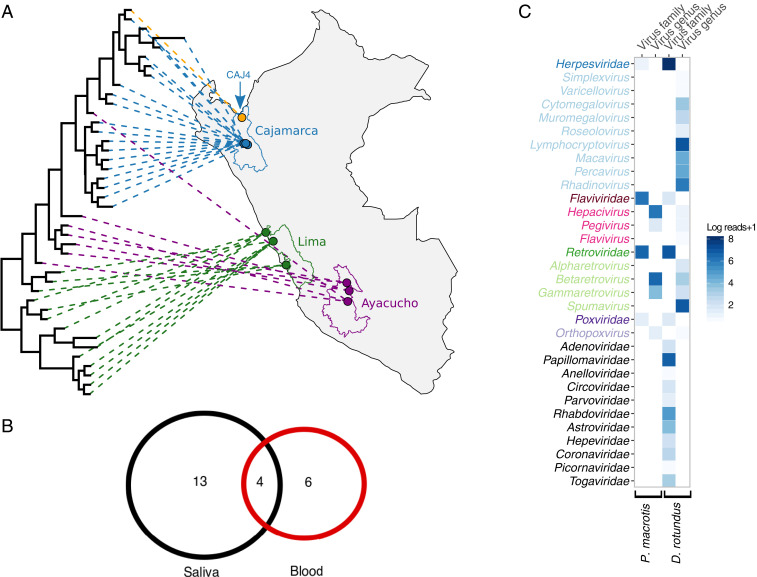Fig. 3.
The transmission biology and candidate helper viruses for bat deltaviruses. (A) Bayesian phylogeny of a 214-nt alignment of DrDV-B DAg projected onto vampire bat capture locations in Peru. Lines and points are colored by administrative regions. Site CAJ4, where the C. perspicillata sequence was detected, is depicted in orange. (B) DrDV-B detections in saliva and blood. The numbers represent individual bats; the four bats in the center had genetically identical DrDV-B sequences in saliva and blood. (C) Mammal-infecting viral communities are shown for the P. macrotis liver transcriptome, which contained PmacDV and combined D. rotundus saliva metagenomes. Viral taxa are colored by family, with lighter shades indicating genera within families for overlapping viral families in both bat species. Viral families only present in one bat species are shown in black. Candidate helpers for OvirDV and MonDV are shown in SI Appendix, Fig. S9.

